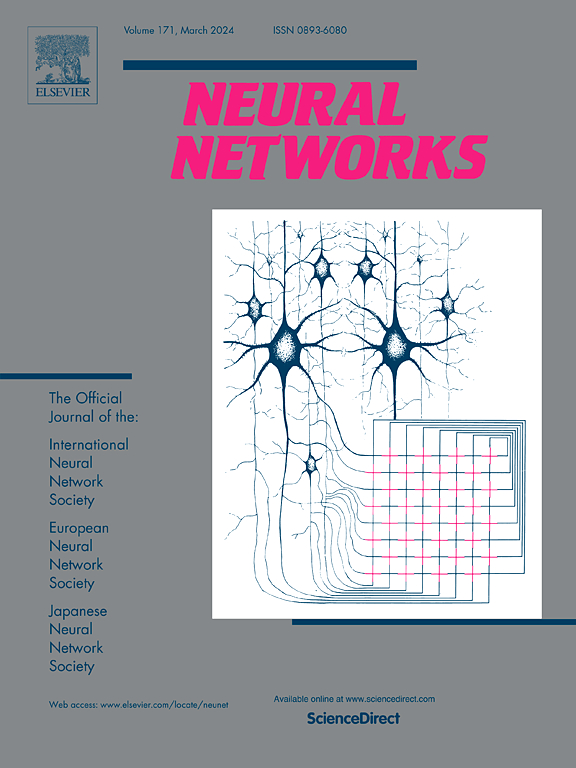利用自适应混合模型学习多正则化突变感知相关滤波器进行目标跟踪
IF 6
1区 计算机科学
Q1 COMPUTER SCIENCE, ARTIFICIAL INTELLIGENCE
引用次数: 0
摘要
判别相关滤波器(DCF)已成为一种流行且有效的目标跟踪方法。基于dcf的跟踪器具有良好的性能和效率,在几个具有挑战性的场景中获得了令人印象深刻的关注和可靠的跟踪结果。尽管基于dcf的跟踪器提高了跟踪性能,但仍然受到外观突变、滤波器退化和目标畸变等意外因素的影响,导致跟踪器性能下降。为了解决这些问题,提出了一种新的多正则化突变感知相关滤波器(MRMACF)方法。为此,我们提出了一种突变感知策略,该策略采用自适应混合模型,利用突变威胁机制技术有效处理过滤器偏离目标位置时的外观突变和过滤器退化问题。突变威胁机制通过比较当前外观和最近历史模型的自适应混合模型方法来识别目标物体外观的突然和显著变化。随后,我们引入了一种改进的稀疏空间特征选择方法,该方法将基于行和列的特征选择方法融合到稀疏空间技术中,旨在识别目标区域内的关键特征,并成功解决目标失真问题。此外,提出了一种环境感知方法,提取目标区域的周围样本,利用上下文信息,防止了滤波器与目标的偏差,提高了判别能力。具体而言,提出了自适应混合模型方法,通过结合前一帧的目标位置信息来减轻跟踪漂移和目标突变威胁。此外,我们使用OTB-2013, OTB-2015, TempleColor-128,无人机-123,UAVDT, vote -2018, LaSOT和GOT-10K基准数据集展示了所提出的MRMACF方法对现有现代跟踪器的效率。具体来说,我们提出的方法在OTB-2015数据集上取得了最高的性能,DP得分为93.2%,AUC得分为69.8%。本文章由计算机程序翻译,如有差异,请以英文原文为准。
Learning multi-regularized mutation-aware correlation filter for object tracking via an adaptive hybrid model
Discriminative Correlation Filters (DCF) have emerged as a popular and effective approach in object tracking. With promising performance and efficiency, DCF-based trackers achieved impressive attention and reliable tracking results in several challenging scenarios. Although DCF-based trackers improve tracking performance, they still suffer from unexpected factors such as appearance mutations, filter degradation, and target distortion, which leads to decreased tracker performance. To address these challenges, a novel Multi-Regularized Mutation-Aware Correlation Filter (MRMACF) approach is presented. To do this, we propose a mutation-aware strategy with an adaptive hybrid model that employs the mutation threat mechanism technique to effectively handle the appearance mutations and filter degradation issues when the filter deviates from the target location. The mutation threat mechanism identifies sudden and significant changes in the target object’s appearance, which is achieved by an adaptive hybrid model approach that compares the current appearance with recent historical models. Following that, we introduce an improved sparse spatial feature selection approach that incorporates row and column-based feature selection methods into the sparse spatial technique, which aims to identify crucial features within the target region and successfully address the problem of target distortion. Moreover, the surrounding-aware approach is presented that extracts the surrounding samples of the target region to utilize the context information, which prevents the filter deviation from the target and improves the discriminative ability. Specifically, the adaptive hybrid model approach is proposed to mitigate both tracking drift and the mutation threat of target by incorporating target position information from previous frames. Furthermore, we showcase the efficiency of the proposed MRMACF approach against existing modern trackers using the OTB-2013, OTB-2015, TempleColor-128, UAV-123, UAVDT, VOT-2018, LaSOT, and GOT-10K benchmark datasets. Specifically, our proposed method achieved the highest performance on the OTB-2015 dataset, with a DP score of 93.2% and an AUC score of 69.8%, respectively.
求助全文
通过发布文献求助,成功后即可免费获取论文全文。
去求助
来源期刊

Neural Networks
工程技术-计算机:人工智能
CiteScore
13.90
自引率
7.70%
发文量
425
审稿时长
67 days
期刊介绍:
Neural Networks is a platform that aims to foster an international community of scholars and practitioners interested in neural networks, deep learning, and other approaches to artificial intelligence and machine learning. Our journal invites submissions covering various aspects of neural networks research, from computational neuroscience and cognitive modeling to mathematical analyses and engineering applications. By providing a forum for interdisciplinary discussions between biology and technology, we aim to encourage the development of biologically-inspired artificial intelligence.
 求助内容:
求助内容: 应助结果提醒方式:
应助结果提醒方式:


